Hyperhidrosis speaks to the condition of extreme sweating. The body works too hard, making sweat in high amounts. Sweating is vital. It links closely to the body's heat control and the autonomic nervous system-the system that works without us even noticing.
However, in some people, this mechanism is malfunctioning. In a calm state, bodies constantly make sweat; not a lot, but some. Heat or emotion makes it make more. Too much sweat, even when calm, happens to everyone. No matter your race, sex, or age, it can strike and often lead to a worse life quality.
In most cases, the problem is localized. However, generalized hyperhidrosis, affecting the whole body, is also known. Among the most common causes of excessive sweating are co-morbidities. Kids and teenagers mostly get hyperhidrosis, and genes play a big role in that. Checking the patient all over and doing lab tests help to identify hyperhidrosis. Using antiperspirants with aluminum in them daily can lessen sweat and help a person feel fresh. Special solutions and procedures are also available to stop sweating. The consequences of hyperhidrosis can include various complications. People who have hyperhidrosis are also at risk of psychological problems.

The human body has four million sweat glands, most of which are eccrine![]() , while the rest are apocrine
, while the rest are apocrine![]() glands.
glands.
Eccrine glands – occur on the entire skin's surface, with the most significant number on the palms, forehead, feet soles, and armpit pits. Eccrine sweat is an odorless, hypotonic solution containing various chemical components. Toxins are also excreted from the body, along with sweat. People with renal failure have higher concentrations of uremic toxins in sweat.
Apocrine glands – There are also apocrine glands on the skin's surface, which are formed with the hair primordia during fetal life and become active during puberty. In adults, they are located under the armpits, in the intimate area, around the navel, on the nipples, and can also occur on the trunk and head. The sweat secreted by the apocrine glands contains fatty acids and has an intense, characteristic odor.

Hyperhidrosis is a distinct disease entity that can be divided into two types. Taking into account the cause, hyperhidrosis is divided into primary![]() and secondary
and secondary![]() .
.
Primary hyperhidrosis – Hyperhidrosis typically is the main, impacting certain body parts. Frequently, it affects the hands, feet, armpits, and face. This condition typically presents in multiple areas at the same time. To confirm the diagnosis of primary hyperhidrosis, symptoms need to persist for at least six months. In primary hyperhidrosis, the main function is the increased activity of the eccrine glands. Genetic, emotional, and environmental causes are considered in the aetiopathology of the primary type.
Secondary hyperhidrosis – This type of excessive sweating coexists with other diseases or is caused by medication. It can occur in the course of hyperthyroidism, diabetes, obesity, and other diseases, among others. Drugs such as neuroleptics, antidepressants, antibiotics, and others are also mentioned among the causes of hyperhidrosis. In a physiological state, hyperhidrosis secondary to hyperhidrosis often occurs during pregnancy, menopause, and exposure to high temperatures. In its course, hyperhidrosis usually affects the entire body, taking on a generalized type.
Hyperhidrosis triggers differ based on their category. Determining the source is vital in identifying whether it's primary or secondary hyperhidrosis. Keep in mind, we consider these triggers while examining hyperhidrosis:

Genetic factors – A genetic predisposition is another way of saying it is a condition that favors the onset of a particular disease entity, often at a much younger age than the population average. Their diagnosis, however, does not mean that a person will become ill, but it does allow us to estimate the likelihood of this happening. Primary hyperhidrosis may have a genetic basis. It manifests itself at a young age and can already occur in children.
Environmental factors – All living conditions of organisms that directly or indirectly affect their health are called ecological factors. Diseases can be caused by living in a polluted environment, an unhealthy diet, and others. Unfavorable environmental factors can cause primary hyperhidrosis. Excessive sweating is mainly influenced by polluted air, which quickly penetrates the skin.
Emotional factors – Feelings and tension may cause too much sweating. Larger sweat glands react when we're under stress. Pressure makes our hearts race and our bodies release hormones and adrenaline. This action prompts the smaller sweat glands to work harder, producing more sweat. People often feeling stressed or emotionally uncomfortable may end up with hyperhidrosis.
Diseases – A variety of health issues can lead to hyperhidrosis. Hyperthyroidism, diabetes, obesity, tuberculosis, endocarditis, Parkinson's disease, pheochromocytoma, and Hodgkin's lymphoma are a few examples. Unique syndromes like the Frey, Riley-Day, and nail-fil syndrome can also cause it. Each condition triggers hyperhidrosis in unique ways. Take diabetes, for instance. Rapid drops in blood sugar levels can trigger cold sweats or heavy sweating, especially at night.
Medications – Medications such as neuroleptics, antidepressants, hypoglycaemic drugs, triptans, opioids, antibiotics, antiviral drugs, antiemetics, antipyretics, antipyretics, non-steroidal anti-inflammatory drugs, substances with adrenergic and cholinergic effects are also mentioned among the causes of hyperhidrosis. When taking these drugs, it is helpful to know the side effects they can cause, especially if they are taken over a long-term period. If you suspect that your hyperhidrosis is due to medication, it may be best to switch to a different preparation.
Pregnancy – In a physiological state, secondary hyperhidrosis often occurs during pregnancy. The part of the brain regulating body temperature responds to hormonal changes, making you sweat more. Night sweats and excessive sweating during pregnancy diminish as the months go by but may worsen closer to the date of termination due to further hormonal changes.
Menopause – Menopause can cause temperatures to fluctuate to a few levels, triggering night sweats. These symptoms with menopause occur because the body's production of estrogen decreases, disrupting the hormonal balance in the hypothalamus and raising sweat levels. Hyperhidrosis in menopause can occur from several to up to a dozen times a day. Although the sweats pass with time, it can sometimes last for several years.
It is also worth remembering that increased secretion by the sweat glands can have simple causes that do not require special treatment. At times, issues like heightened sweat are rooted in basic factors. These could include fever, excessive heat, intense workouts, stress, clothes and shoes made from water-defending items or plastics, or even spicy food additives. If these factors are eliminated and the problems decrease, no special treatments are necessary.

Sweating is the body's natural response to protect itself from overheating. However, there are times when the body produces too much sweat, causing discomfort and impeding daily functioning. Hyperhidrosis is excessive, chronic sweating at rest, unrelated to the body's need to release heat.
The disease is generally asymptomatic in childhood, manifesting for the first time during sexual maturation, which is related to the progressive production of hormones. Cases of hyperhidrosis of the hands in people over 50 years of age are rare; usually, excessive sweating is a symptom of semi-symptomatic disease. It can affect one or several body parts.
Depending on the location, hyperhidrosis is distinguished between the head, armpit pits, feet, perineal area, and, most commonly, hyperhidrosis of the hands.
Puberty usually triggers heavy head sweating and increased sweat gland activity. Those affected often have a sweaty forehead and face and dampness under their hair. This makes the hair go from clean to oily quickly, creating an unattractive appearance. Since warm, damp sweat is the ideal environment for bacteria and fungi to grow, long-term hyperhidrosis can result in skin problems such as ringworm and dandruff. Sweat drips also cause acne lesions.

Sweating under the arms is normal. It helps keep our bodies cool. But for people with hyperhidrosis, this sweat is more than usual. They even sweat when they are resting. The result? Wet marks on clothes under the arms. For them, this could bring stress or shame. It may even influence how they connect with others. And guess what? Shaving under the arms can make sweating worse. How? It can lead to itching and discomfort.
Sweating too much can make things hard, like hyperhidrosis of the feet. In lots of grown-ups, this can make them scared of feeling silly around others when they take off their shoes. When it's summer, more sweat can make this problem worse. It’s trickier when your shoes can't breathe. In Winter, sweaty feet and damp socks from hyperhidrosis can make feet feel cold. Plus, it can cause foot fungus![]() to grow more easily.
to grow more easily.
Sweating too much in private areas, a condition known as hyperhidrosis is an issue both genders can face. In cases where only this area is affected, it's typically called primary hyperhidrosis. Its cause remains unknown, but it usually begins in puberty.
Major signs include damp underwear and a bad smell. People often mistake this condition for peeing accidents because of its location. In women, it can also be confused with symptoms of a vaginal infection. In addition to it, it can be the cause of flare-ups in the groin area and intimate infections.
If you experience excessive sweating localized on your hands and persisting for at least six months without any known cause, hand hyperhidrosis is most likely. Triggers can be stress and emotional distress. Moist hands are troublesome because we only sometimes have the opportunity to wash them frequently, and shaking hands with others or doing various activities becomes a nuisance.
However, suppose your palms sweat regardless of whether it is hot or cold, and the problem also occurs when you are sitting quietly and not doing anything physically demanding. In that case, it is probably a problem of hyperhidrosis.
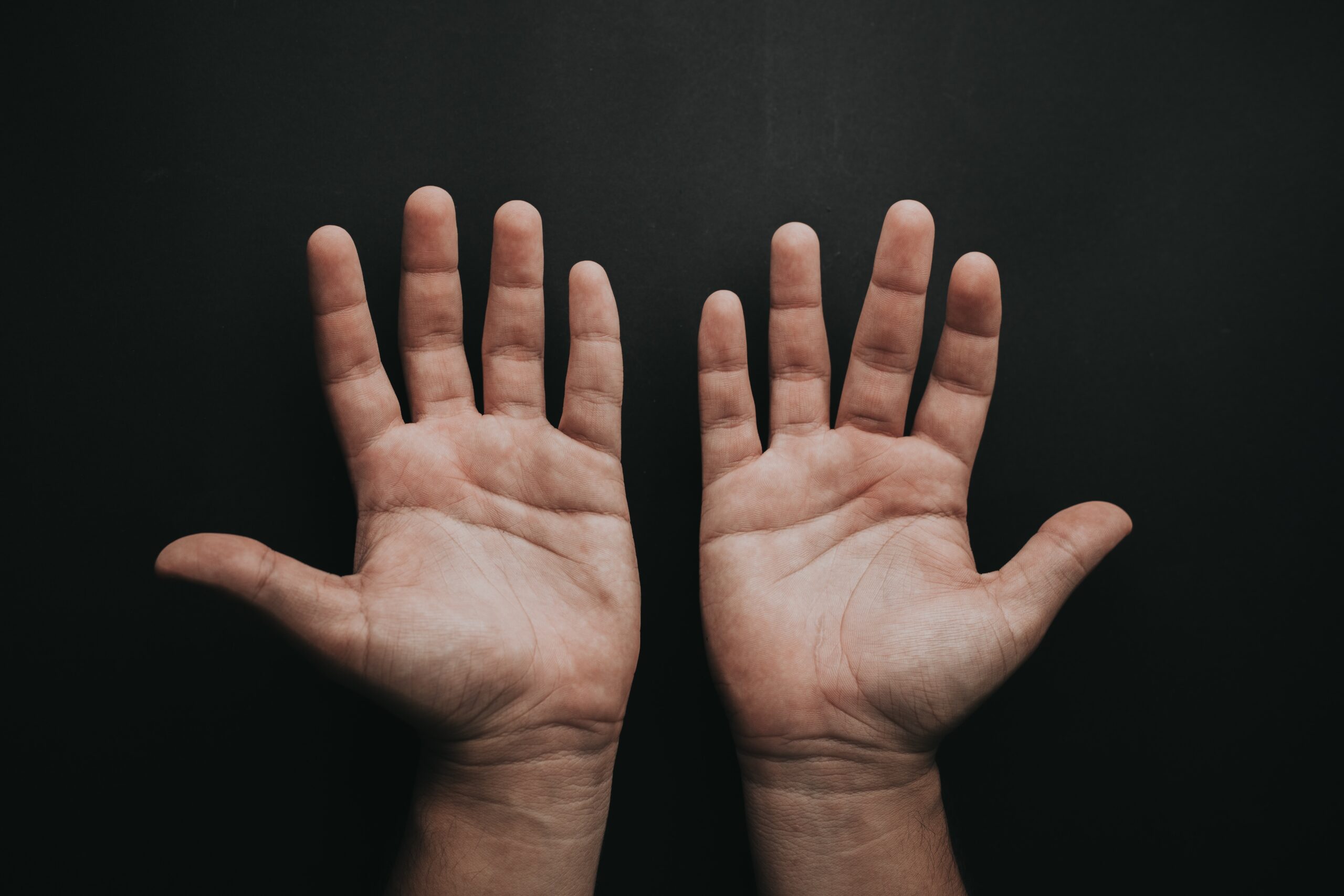
For identifying too much perspiration, it's key to carry out different checks. These help to pinpoint and validate overactive sweat glands. It matters to know if it’s initial or follow-up hyperhidrosis and why there is too much sweat. If too much sweat is making life hard for you, choosing a doctor who can guide you to the right tests to find a good treatment really pays off. In the diagnosis of hyperhidrosis, the following are essential:

Minor's test – To confirm excessive sweating in a particular area of the body, the Minor's test, which is the reaction of a solution of iodine and starch![]() , is done. The solution is applied to an area of skin with abundant sweat glands sprinkled with starch, and after contact with sweat, the smeared area acquires a dark blue color. The Minor's test allows for determining areas with the most significant sweat secretion and monitoring treatment effects.
, is done. The solution is applied to an area of skin with abundant sweat glands sprinkled with starch, and after contact with sweat, the smeared area acquires a dark blue color. The Minor's test allows for determining areas with the most significant sweat secretion and monitoring treatment effects.
Blood morphology and urinalysis – Hyperhidrosis diagnosis is based on taking a blood and urine sample and performing a smear. In the diagnosis of hyperhidrosis, laboratory tests help to exclude secondary hyperhidrosis, which can be a symptom of endocrine disease, cardiovascular disease, and cancer. The indication of specific parameters helps to detect the cause of hyperhidrosis.
Sugar level – Glycaemia is one of the parameters of a blood count that can spot abnormalities in this area. Glycaemia, by definition, is an indicator that determines glucose concentration![]() in the blood. When diagnosing excessive sweating, starting with a sugar level test is a good idea, as hyperhidrosis can be caused by diabetes.
in the blood. When diagnosing excessive sweating, starting with a sugar level test is a good idea, as hyperhidrosis can be caused by diabetes.
Renal and liver parameters – These factors are crucial in spotting the sickness behind too much sweating. The kidney health tests use blood and pee exams to check the state and performance of the kidneys. They let us find not just kidney issues but also diabetes, infections, cancer, stones, and blood pressure issues using pee testing. Liver checks, on the other hand, are special blood exams that let us examine the liver's actions and the substances it creates. These tests can uncover long-term liver inflammation, fat buildup due to obesity, fat processing, diabetes, or too much alcohol, alongside damage to the liver from medicines.
Thyroid hormone levels – We measure hormone levels to spot thyroid issues. Too much can suggest an underactive thyroid, infections, or even bowel concerns. Too little may hint at hypopituitarism, Graves-Basedow disease, various goiter types, thyroid tumors, or thyroiditis, and even certain medications. It's critical to examine the thyroid![]() , because if it isn't functioning right, a person can sweat lots more. Increased palm sweat can be a sign of an overactive thyroid.
, because if it isn't functioning right, a person can sweat lots more. Increased palm sweat can be a sign of an overactive thyroid.
Imaging examinations – If necessary, deepening the diagnosis may also include imaging examinations such as abdominal ultrasound, MRI of the head, CT scan of the chest, echo of the heart, and others. Hyperhidrosis may be the first symptom to enable the diagnosis of endocrine disorders, cardiovascular disease, and even cancer. In such cases, the priority is to treat the underlying disease.
The first-choice preparations for treating hyperhidrosis are topical preparations based on mechanical blocking of the sweat gland outlets. Additional methods may be brought in in cases of heavy sweating and insufficient effectiveness of antiperspirants. Thus, treatment methods for hyperhidrosis include:

Antiperspirants – In cases of hyperhidrosis, topical preparations can block the sweat gland outlets. Antiperspirants containing higher concentrations of aluminum chloride![]() in creams, lotions, salves, or roll-on forms are used. Antiperspirants that do not contain aluminum salts are also available in pharmacies and usually state this on the packaging. There are also antiperspirants enriched with silver compounds that further reduce the growth of bacteria and products designed for sensitive skin.
in creams, lotions, salves, or roll-on forms are used. Antiperspirants that do not contain aluminum salts are also available in pharmacies and usually state this on the packaging. There are also antiperspirants enriched with silver compounds that further reduce the growth of bacteria and products designed for sensitive skin.
Pharmacotherapy – A*************c drugs![]() are used against sweating. Unfortunately, these drugs cause a lot of side effects. A*************c drugs are used in hyperhidrosis, mainly affecting many areas of the body, with unsatisfactory results from local therapy. In the treatment of hyperhidrosis accompanied by anxiety and stress, sedative drugs are recommended.
are used against sweating. Unfortunately, these drugs cause a lot of side effects. A*************c drugs are used in hyperhidrosis, mainly affecting many areas of the body, with unsatisfactory results from local therapy. In the treatment of hyperhidrosis accompanied by anxiety and stress, sedative drugs are recommended.
Iontophoresis – Iontophoresis![]() treatments have found therapeutic applications in treating localized hyperhidrosis, particularly affecting the hands and feet. Iontophoresis involves the introduction of ions into the tissues. A beneficial effect is achieved by closing the sweat gland outlets and inhibiting nerve conduction in the sweat glands. In treating excessive perspiration, iontophoresis is often used; it is non-invasive and has beneficial effects.
treatments have found therapeutic applications in treating localized hyperhidrosis, particularly affecting the hands and feet. Iontophoresis involves the introduction of ions into the tissues. A beneficial effect is achieved by closing the sweat gland outlets and inhibiting nerve conduction in the sweat glands. In treating excessive perspiration, iontophoresis is often used; it is non-invasive and has beneficial effects.
Botulinum toxin A injections – Sometimes, the methods used, such as topical preparations and iontophoresis, do not have the desired effect. This is when botulinum toxin therapy![]() can be used. A side effect of injection into the skin is the risk of temporary paralysis of the surrounding muscles, which can be particularly troublesome for people performing precision manual work. However, botulinum toxin injections are effective and do not cause a high risk of complications.
can be used. A side effect of injection into the skin is the risk of temporary paralysis of the surrounding muscles, which can be particularly troublesome for people performing precision manual work. However, botulinum toxin injections are effective and do not cause a high risk of complications.
Surgical procedures – Hyperhidrosis can also be treated by surgery![]() , in which a sympathectomy is done. Sympathectomy, nowadays mainly done with an endoscopic technique, involves denervation of the sweat glands by interrupting the sympathetic nerve trunks. As a result, blood vessels in the denervated area of the body are dilated, and sweat secretion is reduced. The effectiveness of this method is very high, but the technique could be more invasive and risky.
, in which a sympathectomy is done. Sympathectomy, nowadays mainly done with an endoscopic technique, involves denervation of the sweat glands by interrupting the sympathetic nerve trunks. As a result, blood vessels in the denervated area of the body are dilated, and sweat secretion is reduced. The effectiveness of this method is very high, but the technique could be more invasive and risky.
When it's hot, your body sweats to chill. But sweating too much might signal a problem, known as hyperhidrosis. This could be all over your body or focus on spots like your underarms, hands, feet. Hyperhidrosis has two types. Primary is genetic or influenced by your environment. Secondary is triggered by illness or medication.
If you think you might have hyperhidrosis, a doctor can check. They'll do lab tests to exclude secondary hyperhidrosis. For managing hyperhidrosis, there are tactics. These include skin products, specific medications, or other procedures. Severe treatment may not be necessary, but seeing a doctor and undergoing testing helps, especially when it greatly curbs your life quality.
Table of Contents

Flat feet, therapeutically called pes planus, happen when a person's foot curve falls or collapses. It causes the whole sole… read more »

Cold feet are usually harmless symptoms caused by the body's reaction. However, it can also be a warning sign that… read more »
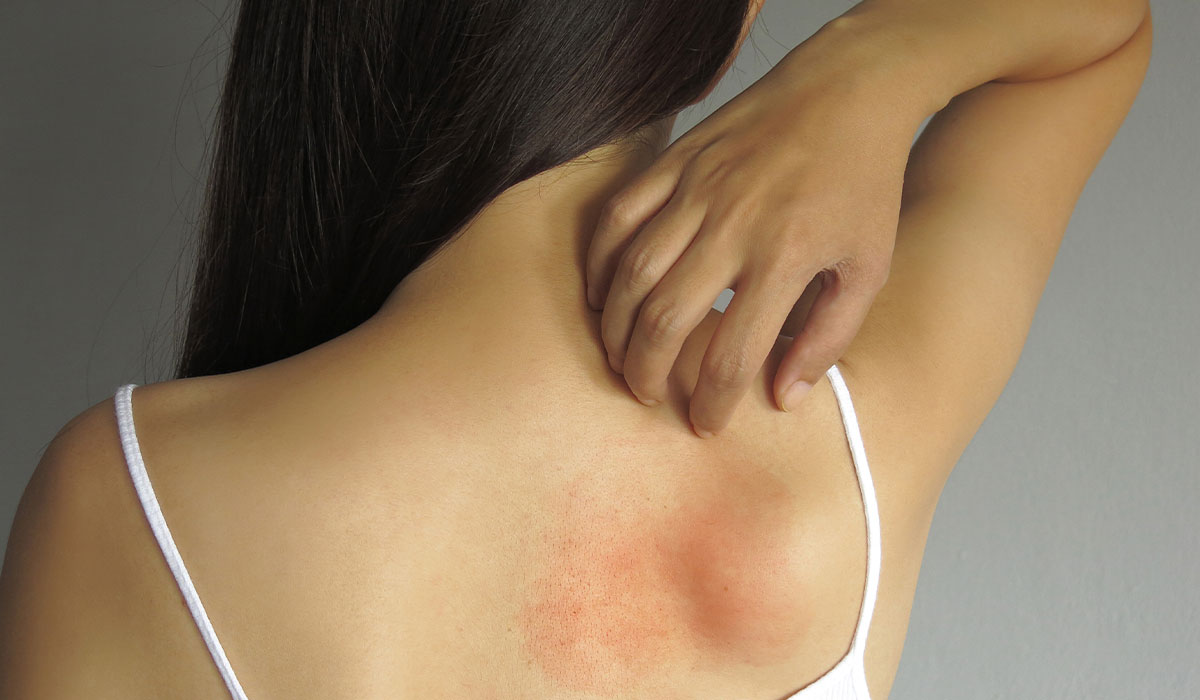
Heat rashes are skin lesions. They occur as a result of excessive sweating due to overheating of the body and… read more »
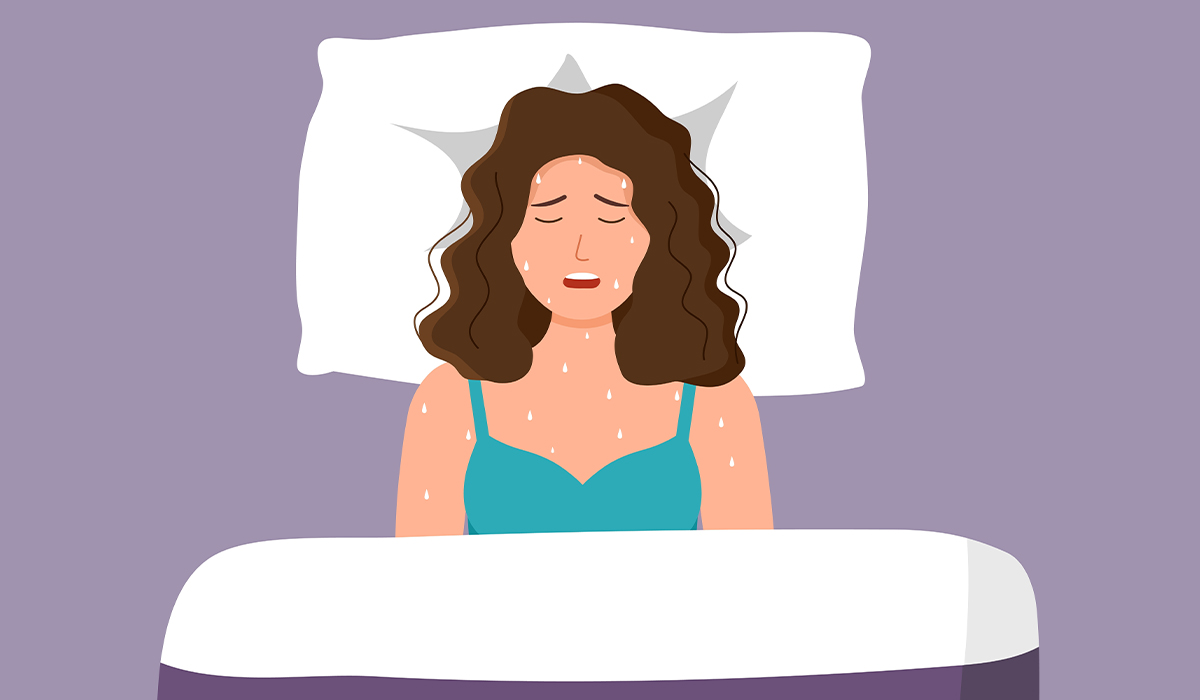
Night sweats refer to excessive sweating during sleep that is unrelated to overheating or environmental factors. They are often associated… read more »

Hot weather can be hazardous to health. The human body can naturally defend itself against heat, but it may not… read more »
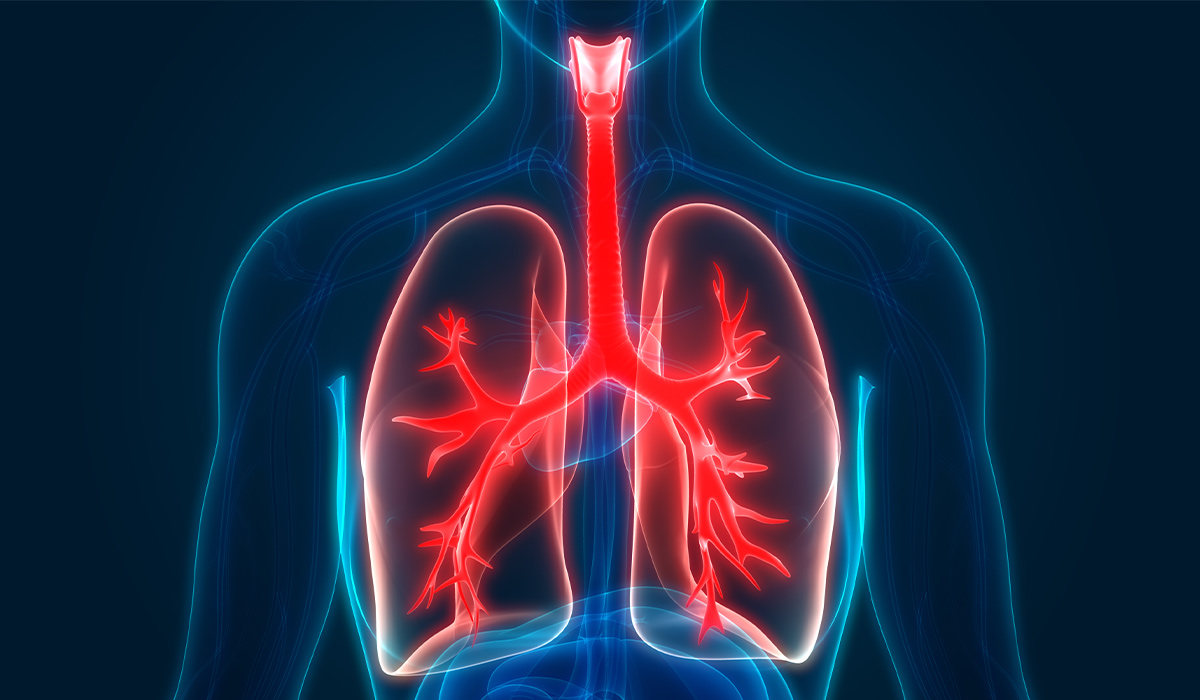
Cystic fibrosis is a genetic disease that primarily affects the respiratory system and the digestive tract. Find out its causes… read more »
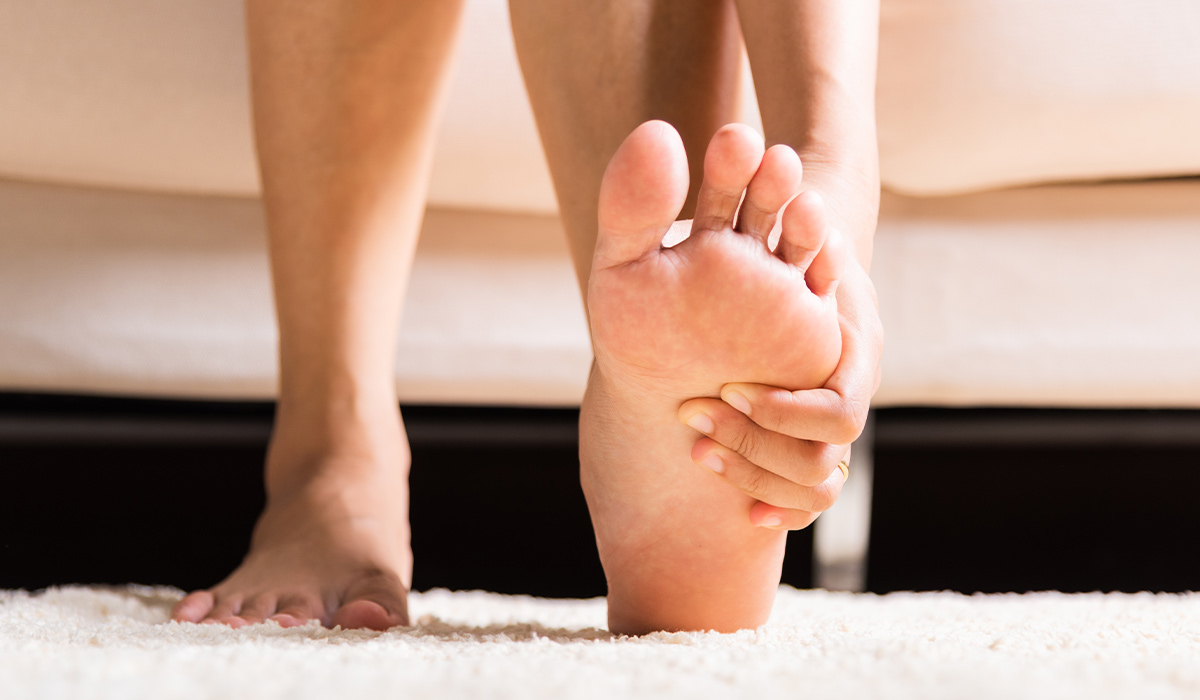
Swollen feet is an outward sign of fluid accumulation in the body. It can be a symptom of serious health… read more »
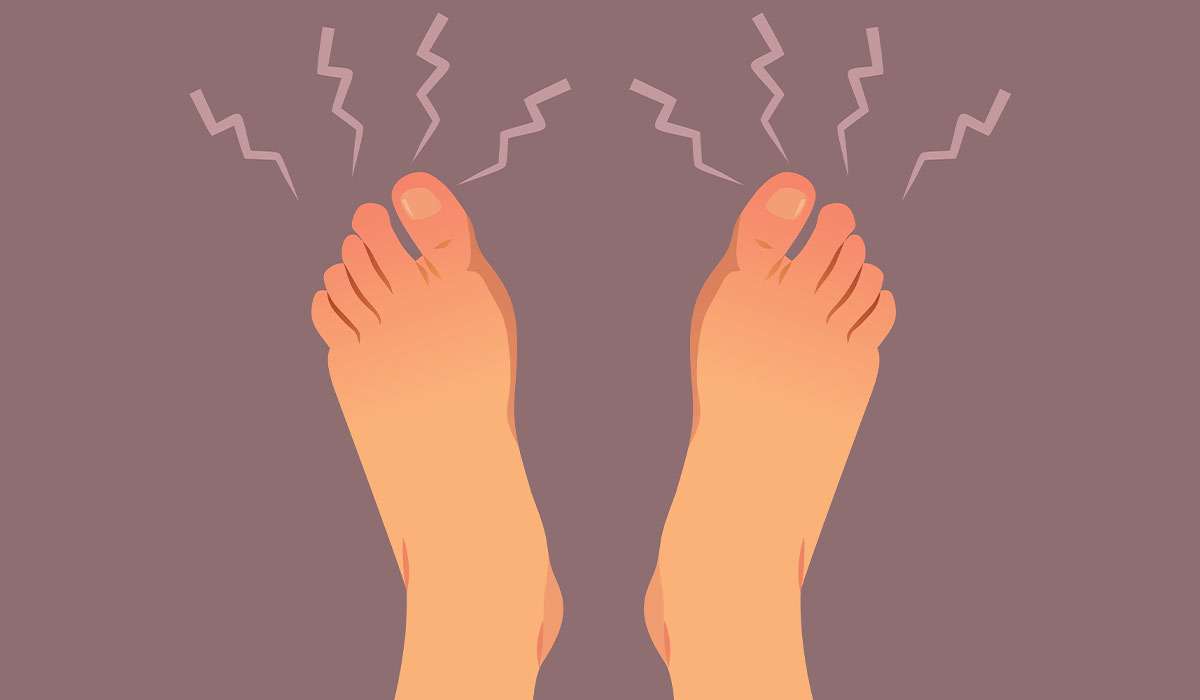
An athlete's foot, or tinea pedis, is an infection of fungal origin that affects the feet. It is usually mild… read more »
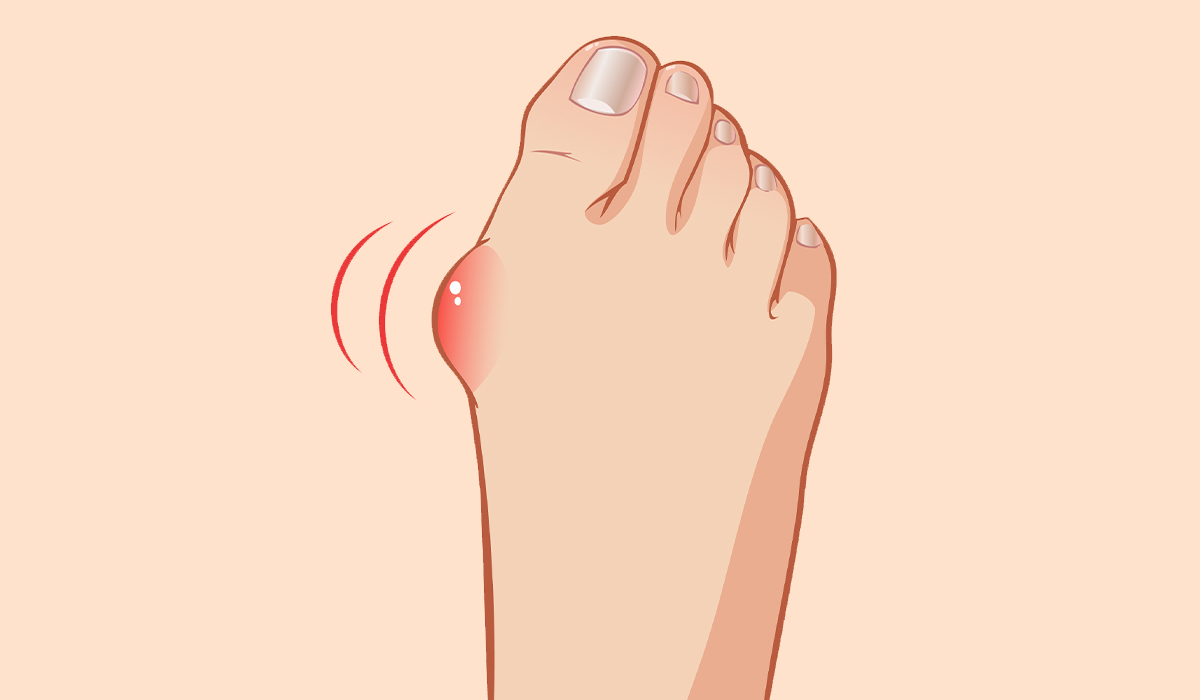
A bunion, which doctors name Hallux Valgus, is when there's a clear bump on the side root of your big… read more »